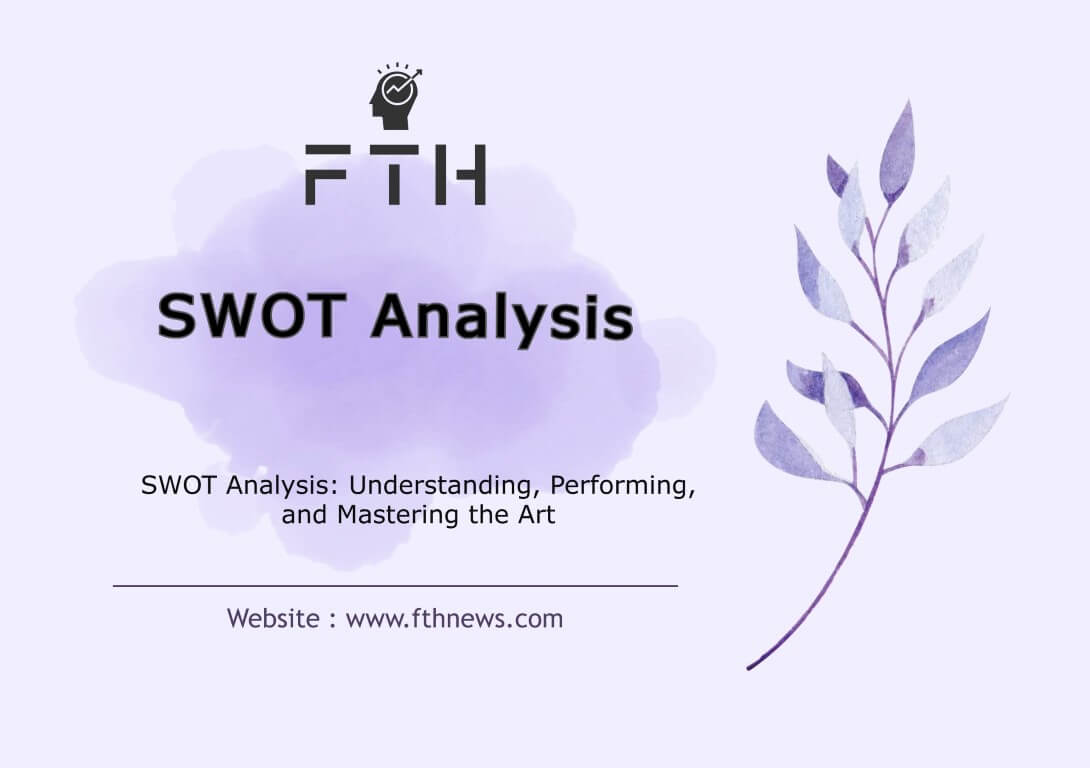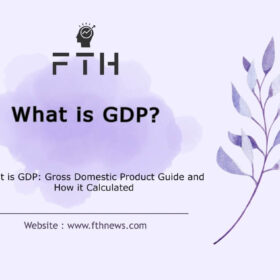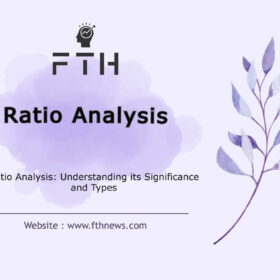
SWOT Analysis: Understanding, Performing, and Mastering the Art
SWOT analysis, an acronym for Strengths, Weaknesses, Opportunities, and Threats, is a strategic planning technique used to evaluate the internal and external factors affecting an organization, project, or individual. In this comprehensive guide, we’ll delve into the origins of SWOT analysis, its purpose, how to perform it, and its applications.
Understanding SWOT Analysis:
SWOT analysis, a cornerstone in strategic planning, provides a holistic evaluation of an entity’s internal and external factors. This analysis is meticulously structured into four key components, each playing a pivotal role in deciphering the organization’s position in its environment:
Strengths (S): Internal Advantages Explored
Strengths encapsulate the internal advantages and positive attributes of the entity. These could range from distinctive competencies, robust resources, unique capabilities, or commendable accomplishments. Recognizing strengths is vital for leveraging existing capabilities to maximize opportunities.
Weaknesses (W): Navigating Internal Challenges
The ‘Weaknesses’ facet delves into internal disadvantages or areas requiring improvement. It sheds light on aspects where the organization may fall short, such as limited resources, skill gaps, or operational inefficiencies. Identifying weaknesses is a crucial step towards strategic enhancement and overcoming internal hurdles.
Opportunities (O): External Horizons Explored
The ‘Opportunities’ dimension extends beyond internal realms to explore external positive factors and potential advantages. This encompasses market trends, emerging technologies, untapped markets, or favorable industry developments. Recognizing opportunities enables organizations to align their strengths with external prospects.
Threats (T): Vigilance Against External Challenges
Threats encompass external challenges and risks that may impede the entity’s progress. These could include market competition, economic downturns, regulatory changes, or technological disruptions. Anticipating and mitigating threats is imperative for strategic resilience and sustained success.
Why SWOT Analysis Matters
SWOT analysis serves as a strategic compass, empowering decision-makers to navigate complexities with a comprehensive understanding of their internal dynamics and external landscape. By dissecting strengths, weaknesses, opportunities, and threats, organizations can craft informed strategies, capitalize on advantages, address vulnerabilities, and proactively respond to external challenges.
In essence, SWOT analysis is more than a tool; it is a strategic framework that empowers entities to chart a course for success by aligning internal capabilities with external opportunities while fortifying against potential challenges. Through this multifaceted lens, SWOT becomes an invaluable asset in the strategic arsenal of decision-makers across various sectors.
Origins of SWOT Analysis:
The inception of SWOT analysis is shrouded in debate, with conflicting attributions to key figures. One narrative attributes its development to the 1960s and US management consultant Albert S. Humphery, who reportedly crafted the framework during a research project at the Stanford Institute in San Francisco. However, intriguingly, there is a lack of definitive publications by Humphery on his work with SWOT analysis, adding a layer of mystery to its origins.
On the other hand, an alternate perspective credits the birth of SWOT to Harvard University Business Administration Professors Smith and Chirstiensen in the 1950s. This academic duo is posited to have laid the foundation for the framework, contributing to its conceptualization. The academic roots of SWOT analysis further complicate the historical narrative.
Despite the ambiguity surrounding its origin, SWOT has transcended historical debates to become a cornerstone in decision-making and strategic planning methodologies. Its widespread adoption attests to its effectiveness and applicability across diverse sectors and industries.
In navigating the intricacies of SWOT analysis, recognizing its evolution from uncertain origins to a universally embraced strategic tool adds an intriguing layer to its narrative. Regardless of the initial creator, SWOT stands as a testament to its enduring relevance in guiding organizations and individuals towards informed and strategic decision-making.
The Purpose and Power of SWOT Analysis
SWOT analysis emerges not merely as a tool but as a strategic compass, guiding organizations and individuals through the intricate landscape of decision-making. Its purpose extends far beyond a routine assessment; it serves as a catalyst for strategic planning, fostering a nuanced understanding of the current situation.
Identifying Areas for Improvement
At its core, SWOT analysis acts as a diagnostic lens, allowing entities to pinpoint areas for improvement with precision. By scrutinizing internal weaknesses and external threats, organizations gain insights into aspects that require strategic attention and enhancement. This introspection sets the stage for targeted improvements and operational excellence.
Leveraging Strengths for Strategic Advantage
The strengths identified through SWOT analysis are not mere accolades; they are the building blocks for strategic advantage. Organizations leverage these internal assets to carve a distinctive niche in the market, differentiate themselves from competitors, and amplify their capabilities. Recognizing and capitalizing on strengths becomes a cornerstone for sustained success.
Capitalizing on External Opportunities
SWOT analysis extends its reach beyond internal facets, illuminating external opportunities that align with an entity’s strengths. This proactive identification of favorable market trends, emerging technologies, or unexplored niches empowers organizations to chart strategic pathways for growth. Capitalizing on external opportunities propels entities towards innovation and market leadership.
Mitigating Threats: Proactive Resilience
One of the pivotal roles of SWOT analysis is in the identification and mitigation of threats. By anticipating external challenges such as market fluctuations, regulatory changes, or competitive pressures, organizations can proactively fortify themselves. This strategic resilience ensures that threats are not merely navigated but transformed into opportunities for growth.
Comprehensive Decision-Making
SWOT analysis, as a comprehensive tool, provides decision-makers with a panoramic view of their organizational landscape. The amalgamation of internal strengths and weaknesses with external opportunities and threats creates a strategic mosaic. This holistic perspective equips decision-makers to make informed choices, align actions with overarching goals, and navigate the complexities of a dynamic environment.
The Ever-Relevant Role of SWOT Analysis
In essence, SWOT analysis is a dynamic and ever-relevant companion in the strategic journey. Beyond a snapshot of the current state, it evolves into a forward-looking instrument, guiding entities to not only survive but thrive in an ever-changing landscape. Its purpose transcends routine assessments; it orchestrates a symphony of strategic moves, fostering resilience, innovation, and sustained success.
How to Perform SWOT Analysis
Conducting a SWOT analysis is a strategic process that requires careful consideration and methodical steps. To ensure a thorough evaluation and effective strategic planning, follow these comprehensive steps:
1. Create a Matrix:
– Structured Framework:
- Begin by preparing a matrix divided into four distinct sections: strengths, weaknesses, opportunities, and threats.
- The matrix serves as the visual canvas for categorizing and organizing key insights.
2. Answer Key Questions:
– Strengths:
- Identify internal advantages and positive attributes.
- Key Question: What are our distinct advantages that set us apart?
– Weaknesses:
- Scrutinize internal challenges or areas needing improvement.
- Key Question: What shortcomings or operational inefficiencies do we need to address?
– Opportunities:
- Explore external positive factors and potential advantages.
- Key Question: What developments in the external environment can we leverage for growth?
– Threats:
- Anticipate external obstacles or challenges that may impact the entity.
- Key Question: What obstacles or external challenges do we foresee?
3. Analysis:
– Comprehensive Examination:
- Delve into both internal and external factors based on the answers provided.
- Conduct a nuanced analysis to understand the interplay between strengths, weaknesses, opportunities, and threats.
- Identify correlations and dependencies within the matrix.
– Areas for Improvement:
- Highlight specific areas for improvement based on weaknesses and threats.
- Pinpoint opportunities that align with existing strengths for strategic advantage.
– Strategic Leverage:
- Explore strategies to leverage strengths and opportunities for maximum impact.
- Devise tactics to mitigate or address weaknesses and threats.
4. Action Plans:
– Strategic Initiatives:
- Translate insights into actionable plans by developing both short and long-term strategies.
- Align action plans with overarching organizational goals and objectives.
– Tactical Execution:
- Specify timelines, responsibilities, and key performance indicators for effective implementation.
- Monitor progress and adapt strategies as needed.
Embracing the Iterative Nature of SWOT Analysis:
Recognize that SWOT analysis is not a one-time exercise but an iterative process. Regularly revisit and update the analysis to account for changes in the internal and external environment. This adaptability ensures that strategies remain aligned with the evolving landscape, fostering sustained success.
By following these comprehensive steps, organizations can embark on a strategic journey that goes beyond mere analysis to actionable insights, facilitating informed decision-making and strategic resilience.
Why is SWOT Analysis Done?
SWOT analysis serves as the linchpin in the strategic planning process, offering a comprehensive framework to guide entities towards their specific targets with efficiency and clarity. The reasons behind conducting SWOT are multifaceted and pivotal for organizational success:
1. Formulating Targeted Plans:
- SWOT analysis is not merely a diagnostic exercise but a precursor to strategic formulation. It enables organizations to delineate plans that are finely tuned to their strengths and aligned with overarching objectives.
2. Efficiency in Goal Attainment:
- The fundamental goal of SWOT analysis is to streamline the path to goal attainment. By gaining a nuanced understanding of internal strengths and weaknesses alongside external opportunities and threats, organizations can navigate challenges more efficiently.
3. Maximizing Benefits:
- Identification and optimization of strengths and opportunities are at the core of SWOT analysis. This process ensures that entities maximize benefits by leveraging internal advantages in harmony with external positive factors.
4. Minimizing Risks:
- Equally important is the mitigation of risks. SWOT analysis provides a mechanism to identify threats and weaknesses, allowing organizations to proactively address and minimize potential risks that may impede progress.
5. Informed Decision-Making:
- Armed with a holistic view of their internal and external landscape, decision-makers can make informed choices. SWOT analysis acts as a compass, guiding decision-makers towards choices that align with organizational strengths and opportunities.
6. Strategic Adaptability:
- SWOT analysis is not static; it is a dynamic process that adapts to changes in the business environment. Regular reviews and updates ensure that organizations remain agile, responsive, and attuned to the evolving landscape.
SWOT Analysis Template:
– Structured Framework:
- A SWOT analysis template typically comprises a matrix divided into four quadrants for strengths, weaknesses, opportunities, and threats.
- The structured format serves as a visual aid, facilitating a systematic assessment of each category.
– Internal vs. External Factors:
- The template distinguishes between internal factors (strengths and weaknesses) and external factors (opportunities and threats).
- This differentiation is critical for understanding the origin and nature of various elements within the analysis.
– Visual Representation:
- The visual representation of the SWOT matrix aids in the synthesis of information. It provides a snapshot of the organization’s current state, allowing for quick insights and discussions.
– Strategic Implications:
- Each quadrant of the template holds strategic implications. Strengths and weaknesses guide internal strategies, while opportunities and threats influence external strategies.
- The template becomes a tangible reference point for strategic discussions and decision-making.
Embracing SWOT Analysis as a Strategic Ally:
In essence, SWOT analysis transcends a mere planning tool; it becomes a strategic ally for organizations navigating the complexities of today’s dynamic business environment. By conducting SWOT with purpose and precision, entities position themselves to not only survive but thrive in the pursuit of their specific targets.
Advantages of SWOT Analysis
the advantages of SWOT analysis extend far beyond its simplicity. While it remains a cost-effective and accessible strategy, its impact resonates in the depth of insights it provides, the richness of discussions it stimulates, and the adaptability it offers in an ever-evolving business landscape. SWOT emerges not just as a tool but as a strategic ally, empowering organizations to navigate complexities with agility and foresight.
1. Affordability:
- Conducting a SWOT analysis stands out for its affordability. It eliminates the need for extensive training or reliance on external consultants, making it a cost-effective strategy for organizations of varying sizes and financial capacities.
2. Multiple Uses:
- SWOT analysis is a versatile tool with applications that extend beyond its traditional boundaries. It serves as a compass for competitive analysis, strategic planning, and targeted assessments geared towards specific goals. Its adaptability renders it a valuable asset across diverse organizational functions.
3. Discussion and Idea Exchange:
- A unique strength of SWOT analysis lies in its ability to foster discussions within an organization. By encouraging the exchange of ideas and perspectives, SWOT becomes a catalyst for collaborative decision-making. The diversity of voices contributes to a richer understanding of the organization’s landscape.
4. Visual Representation:
- The matrix format employed in SWOT analysis offers more than just structure; it provides a visual representation that significantly enhances discussions and decision-making processes. This visual overview simplifies complex information, making it accessible and actionable for decision-makers.
5. Deeper Insight:
- Beyond surface-level assessments, SWOT analysis dives deep into market dynamics and competitive landscapes. It acts as a strategic lens, providing valuable insights into market trends, competition, and opportunities. This deeper understanding becomes a cornerstone for informed decision-making.
6. Information Integration:
- SWOT analysis excels in information integration. It serves as a platform to bring together diverse information sources, transforming the diversity of information into a potential strength. By organizing and synthesizing varied data, SWOT turns information into a strategic asset.
7. Strategic Adaptability:
- SWOT analysis is not a static exercise but an ongoing process that adapts to changes in the organizational environment. This adaptability ensures that strategies remain aligned with the evolving landscape, positioning organizations to navigate challenges and capitalize on emerging opportunities.
SWOT analysis Example
Company Example: Starbucks
Strengths:
- Global Brand Recognition:
- Starbucks boasts unparalleled global brand recognition, making it a powerhouse in the coffee industry.
- Diverse Product Range:
- The company offers a diverse range of coffee, tea, and non-alcoholic beverages, accompanied by various food items, enhancing its appeal to a broad consumer base.
- Market Leadership:
- Starbucks holds a significant market share, solidifying its position as a leader in the coffee and beverage industry.
Weaknesses:
- Dependence on Coffee Beans:
- The reliance on coffee beans exposes Starbucks to market fluctuations in coffee prices, impacting its cost structure.
- High Price Points:
- The premium pricing strategy may deter price-sensitive customers, potentially limiting market penetration.
Opportunities:
- Expansion into Emerging Markets:
- Starbucks has opportunities for further expansion into untapped and emerging markets, presenting new revenue streams.
- Digital Innovation:
- Embracing digital technologies for ordering and payment systems can enhance customer experience and streamline operations.
Threats:
- Intense Competition:
- The coffee industry faces intense competition from local and international players, requiring Starbucks to continuously differentiate itself.
- Economic Fluctuations:
- Economic downturns may impact consumer spending on premium coffee products, posing a threat to Starbucks’ revenue.
Conclusion for Starbucks:
Starbucks’ SWOT analysis illuminates the company’s strategic landscape. By leveraging its global brand strength and diversifying its product offerings, Starbucks has navigated challenges. Addressing weaknesses, such as price points and dependence on coffee beans, remains crucial. Seizing opportunities like digital innovation and expanding into emerging markets positions Starbucks for sustained success. Proactively managing threats, especially in a competitive market and economic fluctuations, underscores the need for strategic agility.
Empowering Starbucks Through Strategic Insight:
Starbucks exemplifies how SWOT analysis serves as a strategic compass. The company utilizes insights to fortify strengths, mitigate weaknesses, capitalize on opportunities, and safeguard against threats. This dynamic approach positions Starbucks as a global industry leader, showcasing the transformative power of strategic analysis and decision-making.
Personal SWOT Analysis:
Transcending Self-Assessment:
- Personal SWOT analysis is not a mundane self-assessment but a transformative journey, serving as a compass for strategic career planning. It goes beyond evaluating skills; it delves into the intricacies of personal and professional aspirations, illuminating a path for holistic growth.
Introspective Exploration:
- This introspective process entails a meticulous examination of individual strengths, weaknesses, opportunities, and threats. It’s a deep dive into self-awareness, uncovering facets that may have been overlooked in the hustle of daily life.
Dual Perspective:
- The beauty of personal SWOT analysis lies in its dual perspective. It considers both personal and professional dimensions, recognizing that individual growth is a tapestry woven with threads from various aspects of life.
Roadmap for Growth:
- More than just a self-discovery exercise, personal SWOT analysis crafts a roadmap for growth. It identifies areas where strengths can be amplified, weaknesses can be addressed, opportunities can be seized, and threats can be mitigated.
Skill Development Nexus:
- At its core, personal SWOT analysis serves as a nexus for skill development. It aligns identified strengths with skill refinement, ensuring that each step taken contributes not only to immediate goals but also to the mastery of valuable skills.
Goal Achievement Blueprint:
- Armed with the insights from personal SWOT, individuals gain a blueprint for goal achievement. Whether aspiring for career milestones, personal fulfillment, or a harmonious work-life balance, the analysis paves the way for intentional and strategic actions.
Empowering Careers Through Self-Insight:
Personal SWOT analysis stands as a beacon for individuals navigating their career trajectories. It empowers professionals to make informed decisions, capitalize on their unique strengths, and navigate challenges with resilience. The journey from self-awareness to strategic career planning unfolds through the lens of personal SWOT, unlocking the full spectrum of individual potential.
Disadvantages of SWOT Analysis
Yes, while SWOT analysis is a valuable strategic planning tool, it does come with disadvantages:
- Simplistic View:
- SWOT analysis provides a simplified snapshot, potentially oversimplifying complex issues and missing nuanced details.
- Subjectivity:
- The analysis is subjective, relying on individual perspectives, which may lead to biased or incomplete assessments.
- Dynamic Environment Challenges:
- In a rapidly changing environment, SWOT’s static nature might become outdated quickly, requiring frequent updates.
- No Prioritization:
- SWOT doesn’t inherently prioritize factors, leaving decision-makers to determine the relative importance of identified elements.
- Overemphasis on Internal Factors:
- It may overly focus on internal aspects, neglecting external forces that can significantly impact an organization.
- Lack of Actionable Strategies:
- SWOT may identify strengths, weaknesses, opportunities, and threats but doesn’t inherently provide clear strategies for action.
- Generic Nature:
- The generic categories (Strengths, Weaknesses, Opportunities, Threats) might not be universally applicable or specific to certain industries.
- No Quantitative Analysis:
- SWOT doesn’t involve quantitative analysis, potentially overlooking numerical data crucial for decision-making.
- Assumption of Independence:
- It assumes that each factor (Strength, Weakness, etc.) operates independently, which might not always be the case.
- Potential Overemphasis on Negatives:
- There’s a risk of overemphasizing weaknesses and threats, leading to a more defensive strategy rather than leveraging strengths and opportunities.
Despite these disadvantages, when used judiciously and complemented with other strategic tools, SWOT analysis remains a valuable aid in decision-making and planning.
Conclusion:
SWOT analysis stands as a beacon for decision-makers across diverse fields. Its simplicity, coupled with effectiveness, positions it as a go-to technique for strategic planning and decision-making. The ability to comprehend and leverage both internal and external factors empowers entities to not only navigate challenges but also to seize opportunities strategically. SWOT analysis becomes a conduit for goal attainment and success.
SWOT emerges as a versatile and empowering tool, offering insights that resonate across personal and organizational landscapes. From guiding career trajectories to steering global enterprises, SWOT remains a constant ally in the pursuit of strategic success. This comprehensive guide aims to equip decision-makers with the knowledge and tools needed to harness the full potential of SWOT analysis in diverse contexts.
The beauty of SWOT analysis lies in its adaptability. It is not a static ritual but a dynamic process that aligns with the evolving landscape. Regular reviews and updates ensure that organizations and individuals stay attuned to changes, fostering agility and resilience in the face of uncertainty.
FAQ
SWOT analysis is a strategic planning tool that assesses internal Strengths and Weaknesses, as well as external Opportunities and Threats. Examples include analyzing a company’s market position or an individual’s career path.
The 5 elements of SWOT analysis are Strengths, Weaknesses, Opportunities, Threats, and the intersection of internal and external factors impacting decision-making.
SWOT consists of four parts: Strengths (S), Weaknesses (W), Opportunities (O), and Threats (T).














